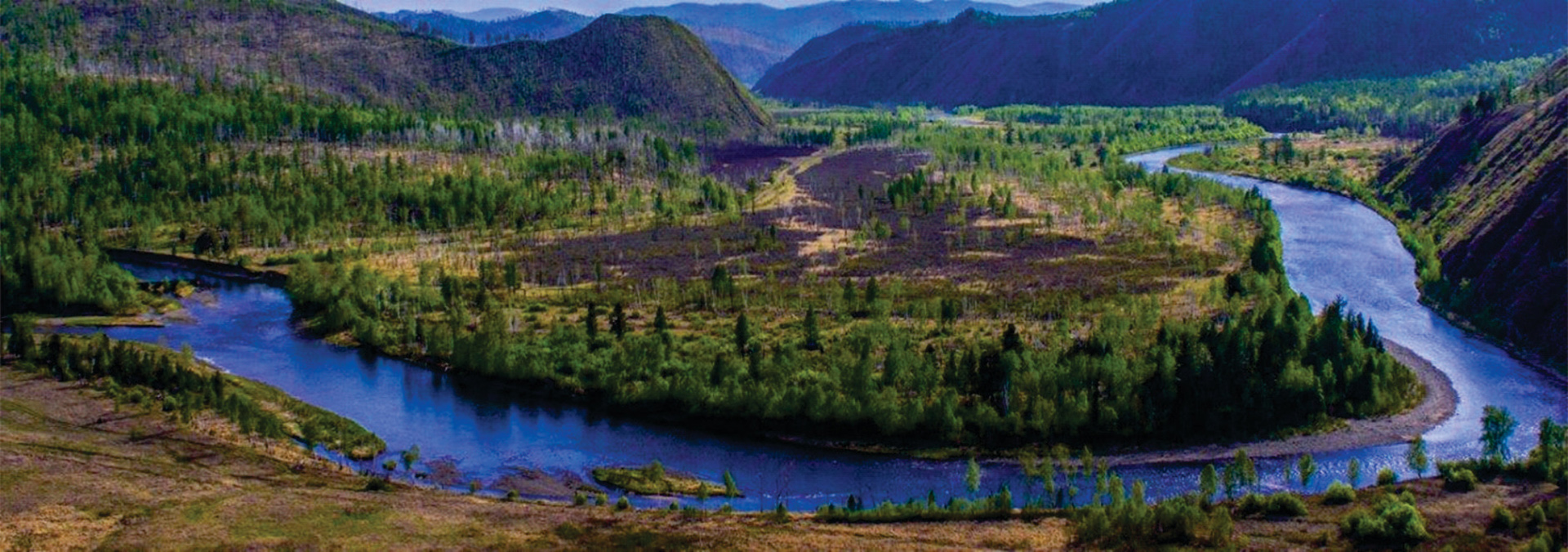In an increasingly urbanised society, forests are appreciated by Mongolians for their intrinsic value, as well as for recreational and spiritual reasons. While Mongolia’s forests represent 12 percent of the country’s land area, the economic, social and environmental value of these forests are substantial. Its forests range from the boreal larch and pine forests of the north to the saxaul woodlands of the south.
Stretching across North America, Northern Europe, Russia, Central Asia and Northeast Asia, 29 percent of all forests are boreal. Boreal forests represent a significant carbon store, partly because low temperatures and decomposition rates lead to a large accumulation of carbon in the soil.
Of the many goods and services provided by Mongolia’s boreal forests, those for which estimates are available indicate the value of forests to be around MNT 431.5 billion (US$310 million) each year.
Some facts about Mongolia’s boreal forests
Mongolia’s boreal forests are in the country’s north, forming a transition zone between the Siberian taiga forest and the Central Asian steppe. Mongolia’s forests provide habitat for a diversity of animals, plants and microorganisms. 181 forest-dependent mammals, birds, reptiles and amphibians are classified as globally Critically Endangered, Endangered, Vulnerable and Near Threatened in the IUCN Red List of Threatened Species.
Forests in local landscapes help to control water balance and run‐off, while reducing soil erosion, which can be exacerbated by forest loss. The estimated forest water yield in some areas (e.g. the soums of Tsagaan Uur and Erenebulgan in Khovsgol and Erdene and Mongonmorit in Tov) reaches more than 75 mm/km2/year; this is largely driven by high levels of fog capture by trees.
Timber and fuelwood have an estimated annual sale value of almost MNT 200 billion (US$ 142 million) in Mongolia, more than half of which is estimated to come from unlicensed removals. Around 150 small and medium-scale forest and wood production enterprises employ around 4,000 people in Mongolia.
Collection of non-timber forest products, like pine nuts, berries and medicinal plants, has an estimated value of MNT 16.5 billion (US$ 12 million) per year, shared among about half of the rural population in areas with boreal forest. According to the former Ministry of Roads, Transport and Tourism (MRTT), 44% of Mongolia’s current tourism products rely on nature.
Approximately 35-40% of Mongolia’s livestock population graze in and near forest areas. The role of forests in supporting grazing is worth an estimated MNT 34.5 billion (US$ 25 million) a year, making up 5% of the value of livestock production in soums with boreal forests. However, grazing can contribute to forest degradation and deforestation.
Pressure on Mongolia’s forests
While rates of forest loss have decreased in recent years, Mongolia’s forests are still under pressure – from fires, pests, logging, grazing, a changing climate, and other factors such as mining. According to the national Forest Research and Development Centre, thousands of hectares of closed boreal forest have been lost or degraded every year since 2004. The continued provision of essential goods and services will depend on recognising forest values in policy and taking effective action to conserve and enhance Mongolia’s forests.
REDD+ in Mongolia
Mongolia is among the first non-tropical countries to decide to implement REDD+. Mongolia became a Partner Country in the UN-REDD Programme in 2011 and launched its National REDD+ Programme in 2015. In addition to preparing for REDD+, this Programme aims to help implement the country’s renewed policy on forest resources until 2030, with ambitious plans to increase forest cover and to promote the sustainable use and protection of forest resources.
Under Mongolia’s UN-REDD Programme, mapping of forest benefits and pressures, and potential REDD+ actions has been carried out, focusing on Tov and Khovsgol aimags (see bit.ly/mbs-redd for outputs so far). This work is feeding into the development of the National Forests and Climate Change Strategy, and further assessment of the potential benefits and risks of REDD+. The Programme is also developing a National Forest Monitoring System and Forest Information System, which will help to monitor and share information about changes in Mongolia’s forests.
Learn more about REDD+ in Mongolia at:
Website: http://www.reddplus.mn/en/
Facebook: https://www.facebook.com/Reddplusmongolia/
Twitter: https://twitter.com/ReddPlus_MGL
Youtube: https://www.youtube.com/channel/UCkVTTLwxUZFg74qRLU0pewQ/
LinkedIn: https://www.linkedin.com/company/un-redd-programme





